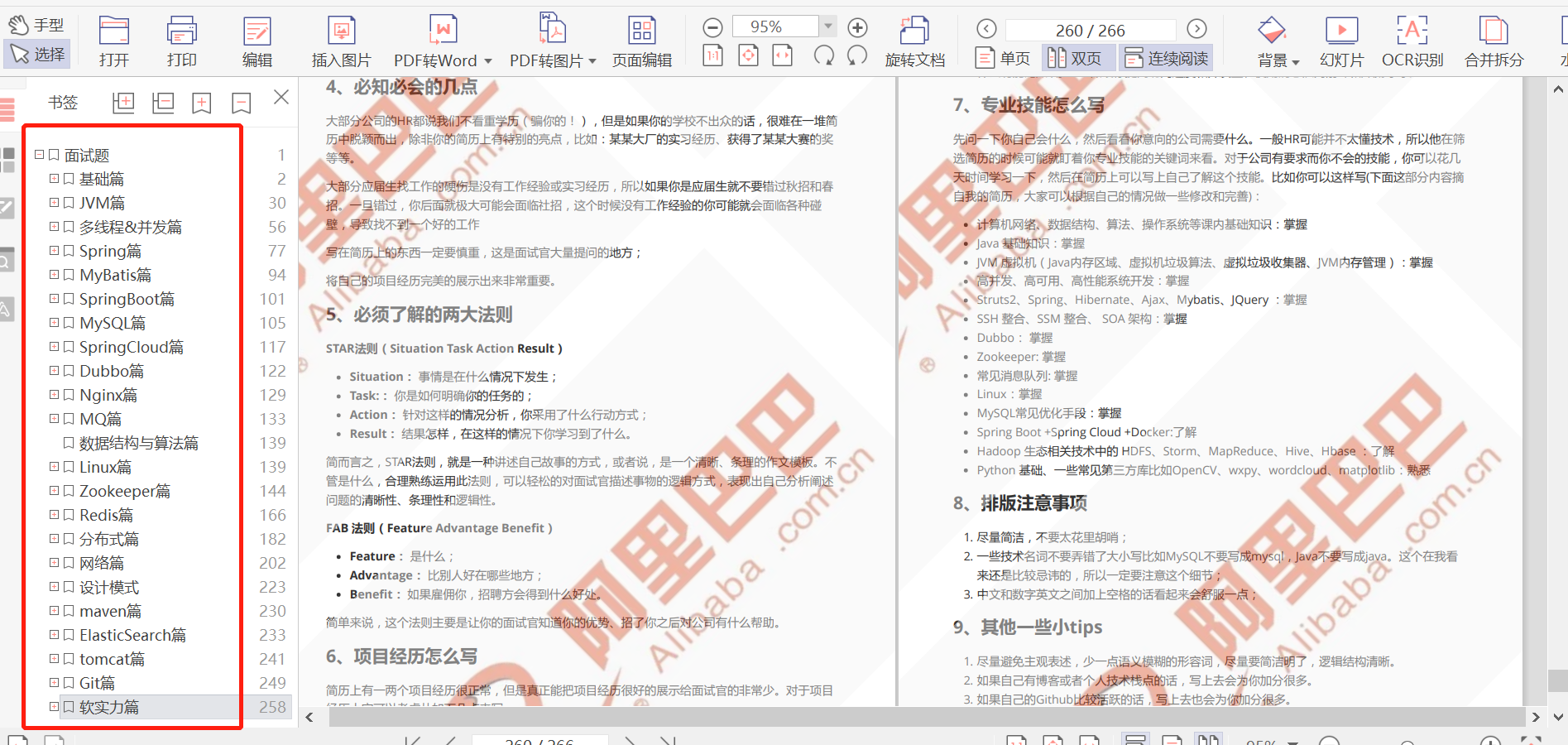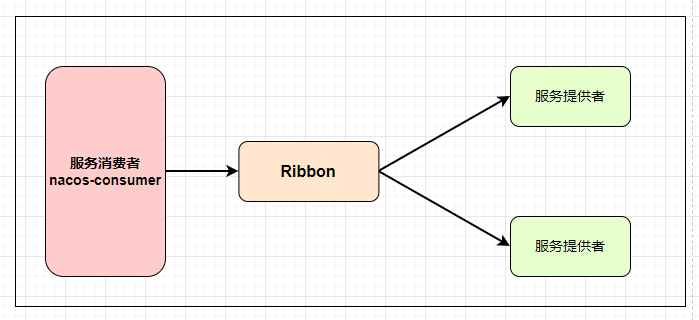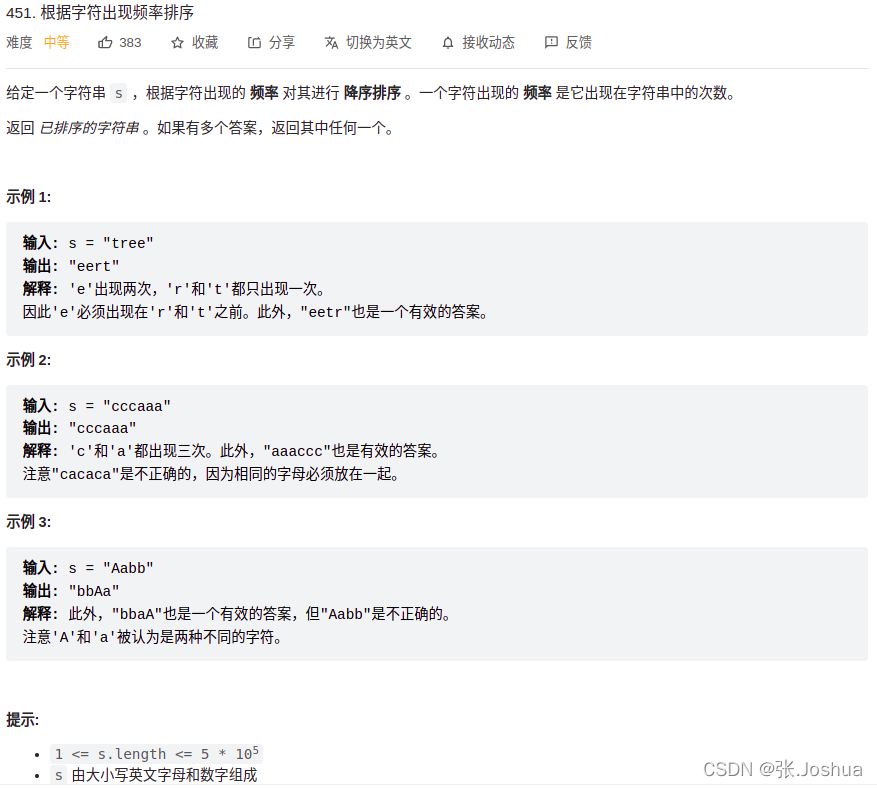当前位置:网站首页>PyMySQL
PyMySQL
2022-04-23 16:40:00 【Sink the wine cup and fleeting time】
PyMySQL
PyMySQL It's from Python Connect to MySQL Database server interface . It has achieved Python database API v2.0, And contains a pure Python Of MySQL Client library
install PyMySQL
pip install PyMySQL
If the download speed is slow , Domestic image source can be used
pip install PyMySQL -i https://pypi.tuna.tsinghua.edu.cn/simple
After successful installation , Test whether you can connect to the database
import pymysql
# Create links , Connect to database ( Server address 、 Port number 、 user name 、 password 、 Database name 、 Coding format )
conn = pymysql.connect(host="192.168.134.1",
port=3306,
user='root',
passwd='123456',
db='testdb',
charset='utf8')
# Use cursor() Method to get a cursor ( The query data is returned in tuple format )
cursor = conn.cursor()
# perform sql Method of querying version information in statement
sql = '''SELECT VERSION(); '''
cursor.execute(sql)
# Query all the data , The returned data is in tuple format
data = cursor.fetchall()
# Close cursor
cursor.close()
# Close links
conn.close()
print(" The database version is :{}".format(data))
Print the results
The database version is :(('10.3.27-MariaDB-0+deb10u1',),)
【 Be careful 】:sql It's best to end the sentence with ;
Create database tables
import pymysql
# Create connection
conn = pymysql.connect(host="192.168.134.1",
port=3306,
user='root',
passwd='123456',
db='testdb',
charset='utf8')
# Create cursors
cursor = conn.cursor()
# If the table exists, delete
cursor.execute("DROP TABLE IF EXISTS users")
# Prepare statements for creating tables
sql = """CREATE TABLE users( id int(10) NOT NULL AUTO_INCREMENT, phonenum int(20) NOT NULL, nickname char(20) DEFAULT NULL, sex char(1) DEFAULT NULL, birth_year int(4) DEFAULT NULL, birth_month int(2) DEFAULT NULL, birth_day int(2) DEFAULT NULL, avatar char(10) DEFAULT NULL, location char(10) DEFAULT NULL, PRIMARY KEY (id) ) ENGINE=InnoDB DEFAULT CHARSET=utf8;"""
# perform sql sentence
cursor.execute(sql)
# Close cursor
cursor.close()
# Close the connection
conn.close()
The insert
When a record is created into a database table , You need to perform INSERT operation .
import pymysql
# Create connection
conn = pymysql.connect(host="192.168.134.1",
port=3306,
user='root',
passwd='123456',
db='testdb',
charset='utf8')
# Create cursors
cursor = conn.cursor()
# Get ready sql sentence
sql = """INSERT INTO users(phonenum,nickname, sex, birth_year,birth_month,birth_day,avatar,location) VALUES (13766665555,'bobo',1,1998,5,27,'00','gz')"""
try:
# perform sql sentence
cursor.execute(sql)
# Commit transaction
conn.commit()
except:
# If an error occurs , Then roll back
conn.rollback()
# Close cursor
cursor.close()
# Close the connection
conn.close()
Query operation
After establishing the database connection , You can query this database . have access to fetchone() Method to get a single record or fetchall() Method to get multiple values from the database table .
-
fetchone()Get the next row of the query result set . The result set is the object returned when the current cursor object is used to query the table . -
fetchmany(n)Get the next... Of the query result set n That's ok . The result set is the object returned when the current cursor object is used to query the table . -
fetchall()Get all the rows in the result set . If you have extracted some rows from the result set , Then the remaining rows are retrieved from the result set .
users Table content

The cursor is in the initial position , It can be done by fetchall() Get all the rows in the result set
import pymysql
# Create connection
conn = pymysql.connect(host="192.168.134.1",
port=3306,
user='root',
passwd='123456',
db='testdb',
charset='utf8')
# Create cursors ( The query data is returned in tuple format )
cursor = conn.cursor()
# 1. perform SQL, Query operation
sql1= '''SELECT * FROM users WHERE sex =1 ; '''
effect_row1 = cursor.execute(sql1)
# 2. Show all the data queried , The returned data is in tuple format
result1 = cursor.fetchall()
# Close cursor
cursor.close()
# Close the connection
conn.close()
print(result1)
# Print the results
''' ( (1, '13766665555', 'bobo', 1, 1998, 5, 27, '00', 'gz'), (3, '13744443333', 'mingming', 1, 1999, 2, 3, '02', 'sh'), (5, '13722221111', 'hanghang', 1, 1999, 4, 4, '00', 'gz'), (6, '17311112222', 'zhanzhan', 1, 2000, 3, 3, '02', 'sh') ) '''
The cursor is in the initial position , It can be done by fetchone() Get the first row of the query result set
( For data in the database , After the query, in order to facilitate processing , Can be converted to dictionary format , adopt key-value Get the data you need )
import pymysql
# Create connection
conn = pymysql.connect(host="192.168.134.1",
port=3306,
user='root',
passwd='123456',
db='testdb',
charset='utf8')
# Create cursors ( The query data is returned in dictionary format )
cursor = conn.cursor(pymysql.cursors.DictCursor)
# 1. perform SQL, Query operation
sql1= '''SELECT * FROM users WHERE sex =1 ; '''
effect_row1 = cursor.execute(sql1)
# 2. Only the first item of query data is displayed
result1 = cursor.fetchone()
# Close cursor
cursor.close()
# Close the connection
conn.close()
print(result1)
# Print the results
''' {'id': 1, 'phonenum': '13766665555', 'nickname': 'bobo', 'sex': 1, 'birth_year': 1998, 'birth_month': 5, 'birth_day': 27, 'avatar': '00', 'location': 'gz'} '''
adopt fetchone() When getting data , The cursor is in the initial position , therefore fetchone() The obtained data is the first data in the query set ;
adopt fetchmany(2) When getting data , The cursor is on the next line of the initial position , therefore fetchmany(2) The obtained data is the second and third data in the query set ;
adopt fetchall() When getting data , The cursor also moves , At this time, there is only one piece of data left in the test set , therefore fetchall() The obtained data is the last data in the query set ( Article 4. );
import pymysql
# Create connection
conn = pymysql.connect(host="192.168.134.1",
port=3306,
user='root',
passwd='123456',
db='testdb',
charset='utf8')
# Create cursors ( The query data is returned in tuple format )
cursor = conn.cursor()
# 1. perform SQL
sql1= '''SELECT * FROM users WHERE sex =1 ; '''
effect_row1 = cursor.execute(sql1)
# 2. Return the data
result1 = cursor.fetchone()
result2 = cursor.fetchmany(2)
result3 = cursor.fetchall()
# Close cursor
cursor.close()
# Close the connection
conn.close()
print(result1)
print(result2)
print(result3)
# Print the results
''' result1 (1, '13766665555', 'bobo', 1, 1998, 5, 27, '00', 'gz') result2 ( (3, '13744443333', 'mingming', 1, 1999, 2, 3, '02', 'sh'), (5, '13722221111', 'hanghang', 1, 1999, 4, 4, '00', 'gz') ) result3 ( (6, '17311112222', 'zhanzhan', 1, 2000, 3, 3, '02', 'sh'), ) '''
【 expand 】 : perform sql When the sentence is ,sql The parameters inside , Dynamic parameter transfer may be required ,
such as select * from users where phonenum ='13766665555'; The phone number inside , Need from excel Get it dynamically in the file, and then query , There are two ways .
- One is to adopt
formatfunction :
sql = "select * from users where phonenum ={};".format(phone)
But in general, it is not recommended to use format function , because format The content in the function can be relatively long , More content , May cause sql A series of security issues such as injection , For example, insert and execute a delete statement , It may cause the deletion of the table
- Two is through
%sPlace holder
Hold down Ctrl, Click oncursor.execute(sql1)Mediumexecute()function , Jump to the source code
def execute(self, query, args=None):
"""Execute a query :param str query: Query to execute. :param args: parameters used with query. (optional) :type args: tuple, list or dict :return: Number of affected rows :rtype: int If args is a list or tuple, %s can be used as a placeholder in the query. If args is a dict, %(name)s can be used as a placeholder in the query. """
while self.nextset():
pass
query = self.mogrify(query, args)
result = self._query(query)
self._executed = query
return result
This explains , execute() Functions can pass arguments , This parameter can be a list 、 Tuples 、 Dictionaries
sql = "select * FROM users WHERE birth_year < %s and birth_month > %s "
cursor.execute(sql=sql,args=[2000,4])
It's a safer way
Encapsulating queries
For data in the database , Query operation is the most common operation , In the interface automation test project , You often have to query the data in the database , Here is a simple encapsulation of the query operation
Here are two packaging methods
The first one is : The database configuration does not need to be changed , Then fill in the database information into the initialization configuration
import pymysql
from pymysql.cursors import DictCursor
class MysqlUtil:
def __init__(self,return_dict=False):
# Configuration database
self.coon = pymysql.connect(
host="192.168.174.132",
port=3306,
user='bobo',
passwd='hh123456',
db='swiper',
charset='utf8'
)
# self.cursor = self.coon.cursor(DictCursor)
if return_dict:
self.cursor = self.coon.cursor(pymysql.cursors.DictCursor) # Specifies that each row of data is returned as a dictionary
else:
self.cursor = self.coon.cursor() # Specifies that each row of data is returned as a primitive
def close(self):
self.cursor.close() # Close the query
self.coon.close() # Close the connection
# Query a piece of data
def fetch_one(self, sql):
# perform SQL
self.cursor.execute(sql)
# To get the results
result = self.cursor.fetchone() # Return to Yuanzu ()/ Return dictionary {}
return result # Return results
# Query multiple data
def fetch_all(self, sql):
# perform SQL
self.cursor.execute(sql)
# To get the results
results = self.cursor.fetchall() # Returns a list of [(),()...] / [{},{}...]
return results
if __name__ == '__main__':
mysql = MysqlUtil(return_dict=True)
sql = "select * from users where phonenum ='13766665555';"
result = mysql.fetch_one(sql)
print(result["birth_day"])
# Be sure to turn it off
mysql.close()
# Print the results 27
The second kind : For safety reasons , Write the database information to the configuration file , Classes are more reusable , And sql More secure
import pymysql
from pymysql.cursors import DictCursor
class DBHandler:
# init The data in is subsequently replaced by config File read
def __init__(self,host="192.168.174.132",
user='bobo',
passwd='hh123456',
db='swiper',
charset='utf8',
cursorclass=DictCursor,
**kw
):
# Create connection
self.con = pymysql.connect(host=host,user=user,passwd=passwd,db=db,charset=charset,cursorclass=cursorclass,**kw)
# Create cursors ( The query data is returned in dictionary format )
self.cursor = self.con.cursor()
def query(self,sql,args=None,query_one=True):
''' Query statement , By default, only one query '''
self.cursor.execute(sql,args)
# To get the results
if query_one :
return self.cursor.fetchone()
else:
return self.cursor.fetchall()
def close(self):
self.cursor.close() # Close the query
self.con.close() # Close the connection
if __name__ == '__main__':
sql = "select * FROM users WHERE birth_year < %s and birth_month>%s "
db = DBHandler()
res =db.query(sql=sql,args=[2000,4],one=False)
print(res)
# result
[
{
'id': 1, 'phonenum': '13766665555', 'nickname': 'bobo', 'sex': 1, 'birth_year': 1998, 'birth_month': 5, 'birth_day': 27, 'avatar': '00', 'location': 'gz'},
{
'id': 2, 'phonenum': '13755554444', 'nickname': 'yiyi', 'sex': 0, 'birth_year': 1999, 'birth_month': 5, 'birth_day': 5, 'avatar': '00', 'location': 'hz'}
]
update operation
UPDATE Statement can update the data in any database , It can be used to update one or more existing records in the database .
import pymysql
# Create connection
conn = pymysql.connect(host="192.168.134.1",
port=3306,
user='root',
passwd='123456',
db='testdb',
charset='utf8')
# Create cursors
cursor = conn.cursor()
# Get ready sql sentence ( take sex=0 Year of birth +1)
sql = "UPDATE users SET birth_year = birth_year + 1 WHERE SEX = '%c'" % ('0')
try:
# perform sql sentence
cursor.execute(sql)
# Commit transaction
conn.commit()
except:
# If an error occurs , Then roll back
conn.rollback()
# Close cursor
cursor.close()
# Close the connection
conn.close()
Delete operation
When you want to delete some records from the database , Then you can execute DELETE operation .
import pymysql
# Create connection
conn = pymysql.connect(host="192.168.134.1",
port=3306,
user='root',
passwd='123456',
db='testdb',
charset='utf8')
# Create cursors
cursor = conn.cursor()
# Get ready sql sentence ( take birth_year stay 2000 People deleted after years )
sql = "DELETE FROM users WHERE birth_year > '%d'" % (2000)
try:
# perform sql sentence
cursor.execute(sql)
# Commit transaction
conn.commit()
except:
# If an error occurs , Then roll back
conn.rollback()
# Close cursor
cursor.close()
# Close the connection
conn.close()
encapsulation PyMySQL
dbconf.yaml
db_product:
dbname: test
host: test.com
port: 3306
user: Admin
pwd: 123456
db_test:
dbname: testdb
host: 192.168.132.1
port: 3306
user: bobo
pwd: 123456
By reading the yaml Configuration information in the file , Connect to database , Perform database operations
DBHandler.py
import pymysql
from pymysql.cursors import DictCursor
class MysqlUtil:
def __init__(self,dbconf):
self.dbconf = dbconf
self.conn = self.get_conn() # Connection object
self.cursor = self.get_cursor() # Cursor object
def get_conn(self):
""" Get the connection object """
conn = pymysql.connect(host=self.dbconf['host'],
port=self.dbconf['port'],
user=self.dbconf['user'],
passwd=self.dbconf['pwd'],
db=self.dbconf['dbname'],
charset='utf8')
return conn
def get_cursor(self):
""" Get cursor object """
# cursor = None
cursor = self.conn.cursor(cursor=pymysql.cursors.DictCursor)
return cursor
def query(self, sql, args=None, one=True):
''' Query statement , By default, only one query '''
self.cursor.execute(sql, args)
# To get the results
if one:
return self.cursor.fetchone()
else:
return self.cursor.fetchall()
def commit_data(self, sql):
""" Submit data ( to update 、 Insert 、 Delete operation ) """
self.cursor.execute(sql)
self.conn.commit()
def close(self):
self.cursor.close()
self.conn.close()
YamlHandler.py
import yaml
# Read yaml file
class ReadYaml:
def __init__(self, path, param=None):
self.path = path # File path
self.param = param # Get all data by default
# obtain yaml The data in the file
def get_data(self, encoding='utf-8'):
with open(self.path, encoding=encoding) as f:
data = yaml.load(f.read(), Loader=yaml.FullLoader)
if self.param == None:
return data # Return all data
else:
return data.get(self.param) # The get key is param Value
Test execution file
test.py
from DBHandler import MysqlUtil
from YamlHandler import ReadYaml
import os
if __name__ == '__main__':
dir_path = os.path.split(os.path.abspath(__file__))[0]
yaml_path = os.path.join(dir_path,'test.yaml')
db_conf = ReadYaml(yaml_path,'db_test').get_data()
db = MysqlUtil(db_conf)
sql = "select * FROM users WHERE birth_year < %s and birth_month>%s "
res = db.query(sql=sql, args=[2000, 4], one=False)
print(res)
db.close()
版权声明
本文为[Sink the wine cup and fleeting time]所创,转载请带上原文链接,感谢
https://yzsam.com/2022/04/202204231402128302.html
边栏推荐
- How to quickly batch create text documents?
- 最详细的背包问题!!!
- 文件系统读写性能测试实战
- Xinwangda: HEV and Bev super fast charging fist products are shipped on a large scale
- ESXi封装网卡驱动
- Hypermotion cloud migration completes Alibaba cloud proprietary cloud product ecological integration certification
- Flask如何在内存中缓存数据?
- MySQL的btree索引和hash索引区别
- Day 9 static abstract class interface
- Findstr is not an internal or external command workaround
猜你喜欢

How to choose the wireless gooseneck anchor microphone and handheld microphone scheme

The font of the soft cell changes color

阿里研发三面,面试官一套组合拳让我当场懵逼

OMNeT学习之新建工程

Nacos detailed explanation, something

Countdown 1 day ~ 2022 online conference of cloud disaster tolerance products is about to begin

Sort by character occurrence frequency 451

299. Number guessing game

Gartner predicts that the scale of cloud migration will increase significantly; What are the advantages of cloud migration?

Gartner 发布新兴技术研究:深入洞悉元宇宙
随机推荐
Cartoon: what are IAAs, PAAS, SaaS?
详解牛客----手套
Solution of garbled code on idea console
The most detailed knapsack problem!!!
MySql主从复制
VMware Workstation cannot connect to the virtual machine. The system cannot find the specified file
磁盘管理与文件系统
伪分布安装spark
1959年高考数学真题
Loggie source code analysis source file module backbone analysis
Summary according to classification in sail software
昆腾全双工数字无线收发芯片KT1605/KT1606/KT1607/KT1608适用对讲机方案
About JMeter startup flash back
建站常用软件PhpStudy V8.1图文安装教程(Windows版)超详细
众昂矿业:萤石浮选工艺
◰GL-阴影贴图核心步骤
Easyexcel reads the geographical location data in the excel table and sorts them according to Chinese pinyin
Hyperbdr cloud disaster recovery v3 Version 2.1 release supports more cloud platforms and adds monitoring and alarm functions
RecyclerView advanced use - to realize drag and drop function of imitation Alipay menu edit page
计组 | 【七 输入/输出系统】知识点与例题